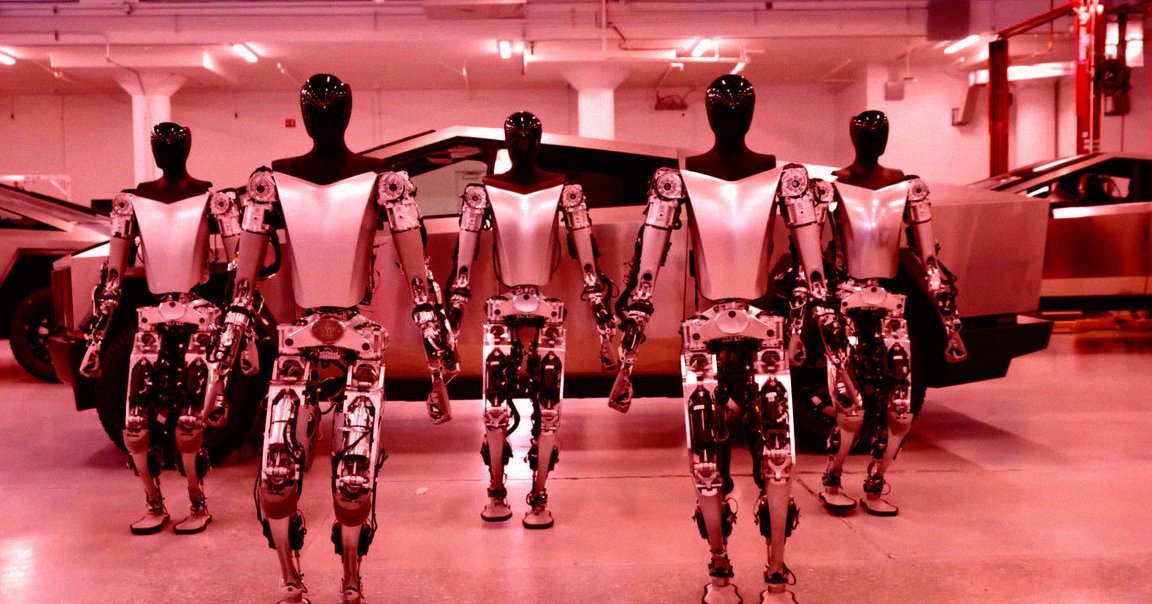
During Tesla’s third-quarter earnings call on Wednesday, CEO Elon Musk once again threatened investors that he would walk away if they didn’t agree to award him an astonishing $1 trillion payout.
The unprecedented package, which shareholders are set to vote on next month, could make the already richest man in the world the first trillionaire over the next decade — providing, that is, that Tesla hits some astonishing metrics, including 20 million vehicle deliveries, a million robotaxis, and a million Optimus humanoid robots.
The robots, in particular, seem to have consumed much of Musk’s attention lately. During the call, the mercurial executive made some extremely peculiar remarks that may provide insight into his motivations for aggressively chasing a 25 percent stake in the company over his current 13 percent stake.
“If we build this robot army, do I have at least a strong influence over this robot army?” he told investors. “Not control, but a strong influence… I don’t feel comfortable building that robot army unless I have a strong influence.”
His repeated use of the word “army” certainly stands out, suggesting the robot could eventually be used as a weapon. Is Musk considering having his robots be deployed as soldiers?
Until now, the company’s marketing has suggested more mundane and home-oriented use cases. Per Tesla’s initial announcement in 2022, Optimus was designed to do anything that humans don’t want to do, thereby bringing about a purported “age of abundance.” We’ve seen videos of early prototypes folding t-shirts, for instance, handing out popcorn.
Over three and a half years after Optimus was first announced, the company has yet to significantly ramp up production of its two-legged humanoid, encountering major production headwinds along the way. So far this year, Tesla has reportedly fallen far behind Musk’s stated goal of building 5,000 Optimus robots, not to mention his promises of producing 100,000 Optimus robots a month by “next year.”
When the company is looking to produce its one millionth Optimus remains entirely unclear, suggesting a future where Musk holds control over a so-called “robot army” still seems a long way off.
In the meantime, Musk is doubling down. Last month, he claimed that a whopping 80 percent of his EV maker’s value would come from Optimus robots, indicating that the company was, broadly speaking, ready to give up its focus on producing vehicles. Case in point, its latest seemingly AI-generated “Master Plan Part IV” barely mentions the company’s fleet of vehicles.
As of right now, the company’s existing car business isn’t even remotely reflected by its $1.46 trillion valuation. The company’s Q3 results missed Wall Street estimates, despite a bump in vehicle deliveries heavily influenced by the September expiry of a $7,500 federal tax credit. The company is also spending far more than it has before, in large part thanks to tariffs. (Shares slumped by a few points in early trading on Thursday.)
During this week’s call, Musk claimed that the company will have a “production-intent prototype” of Optimus ready by early next year, with production kicking off by the end of 2026.
Whether his ambitious predictions will turn out to be true remains to be seen. After all, the CEO has a long track record of vastly overpromising and underdelivering on his ambitions.
More on Tesla: Tesla Deploys Self-Driving Mode That Ignores Speed Limits